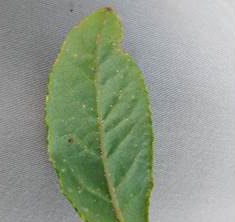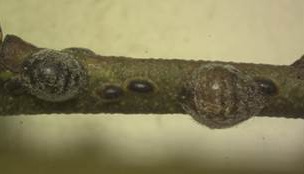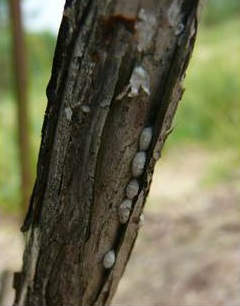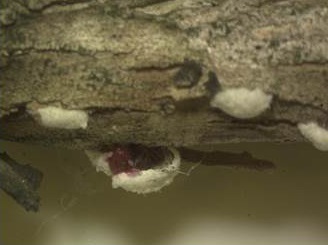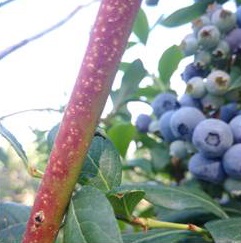Identify signs of scale insects on blueberry plants
Learn how to spot signs of scale on your blueberry plants.
Overview
Scale insects are an emerging pest in blueberries in Ontario. Spray programs used to manage spotted wing drosophila may be impacting natural predators and parasites that normally help keep scale numbers low.
Types of scale insects
Several species of scale insects affect blueberries in Ontario. These include:
- Soft scales, such as:
- Azalea scale
- Eriococcus azalea
- Lecanium scales (multiple species, including terrapin)
- Armored scales, such as:
- Putnam scale Diaspidiotus ancylus
Scales have piercing-sucking mouthparts. Heavy scale infestations can weaken blueberry plants and reduce yield.
What to look for
Soft scales feed on woody tissue, stems and leaves. They can produce large amounts of honeydew, which attracts ants and leads to the growth of unsightly sooty mold. Putnam scale can cause defoliation, decline and death of blueberry plants if populations are high. It will also feed on fruit (Figure 1), causing direct damage and on leaves (Figure 2).
Lecanium scales
Mature Lecanium scales are often brown, rounded and helmet-shaped. They grow to about 6 to 8 mm long (see Figure 3).
Azalea bark scale
This scale is easy to recognize by the white, cottony sacs that cover the developing pink eggs (see Figures 4 and 5).
Putnam scales
The cover of Putnam scale (1 to 2 mm at maturity) is hard, flattened and shell-like, and does not attach to the body. If you remove it, you can see the insect underneath (see Figure 6). When numbers are high, they appear crust-like.
In contrast, the “helmet” is part of the soft scales body wall and cannot be removed from the insect. Putnam scale is easy to miss on old bark, but the small grey dots are noticeable on leaves, fruit and new growth.
Managing scale insects
Check your blueberry plants regularly for signs of scale insects. Scales overwinter on older, woody canes, but you should also inspect new growth.
Pruning
Plan to prune well next winter. Pruning old canes helps keep scale under control.
Apply dormant oil
Apply dormant oil in early spring. Make sure to cover all parts of the plant thoroughly — good coverage is essential for scale control.
Use insecticide after bloom
To control lecanium scale, apply Movento insecticide after bloom but before harvest (7 day pre-harvest interval (PHI)). The best time to apply is when scale insects are producing crawlers — the mobile first instar nymphs that leave their mother's shell to find new places to settle and feed. Crawlers are tiny and hard to see. You can use double-sided tape to help monitor crawler activity.

